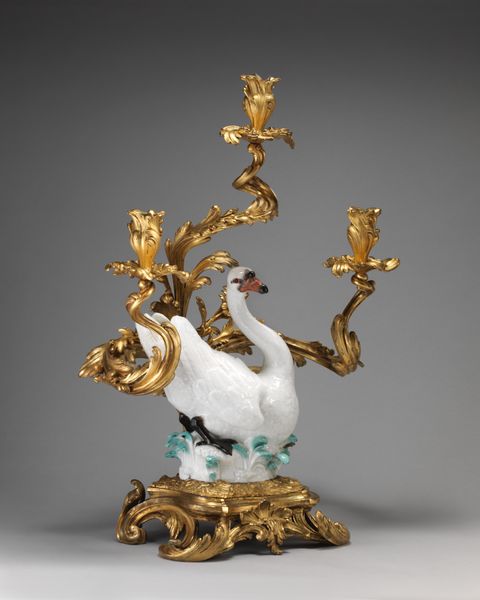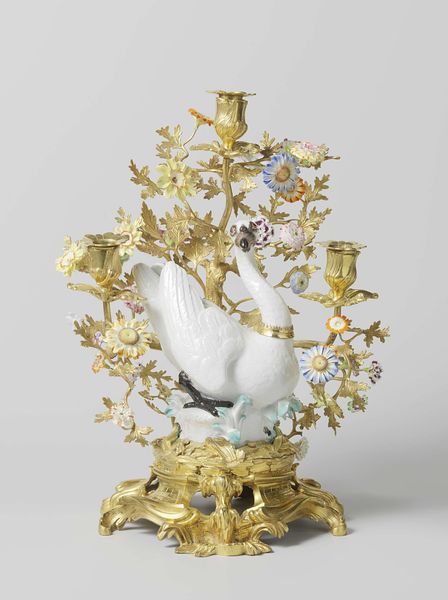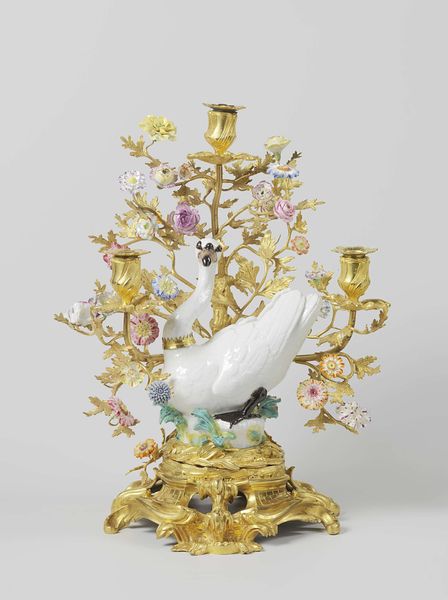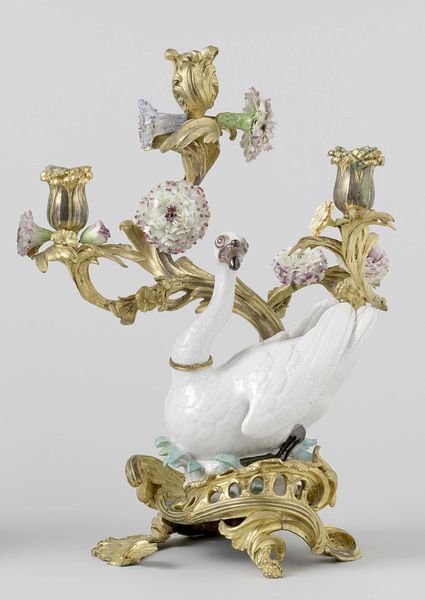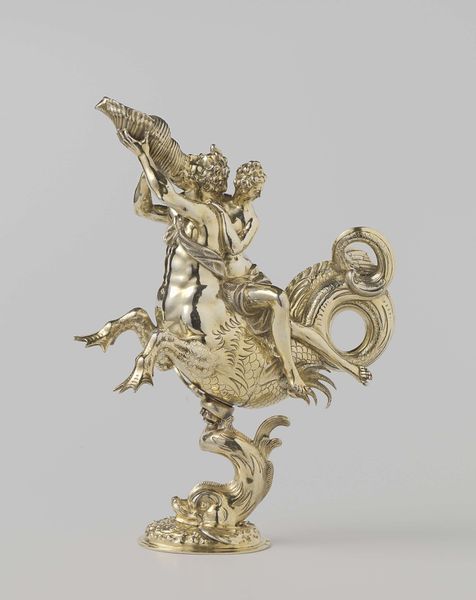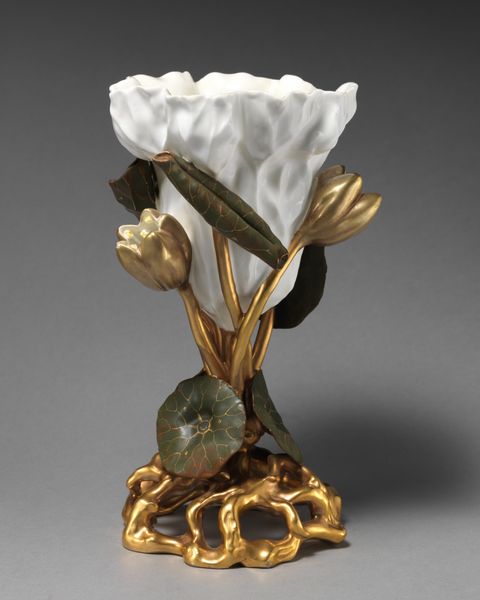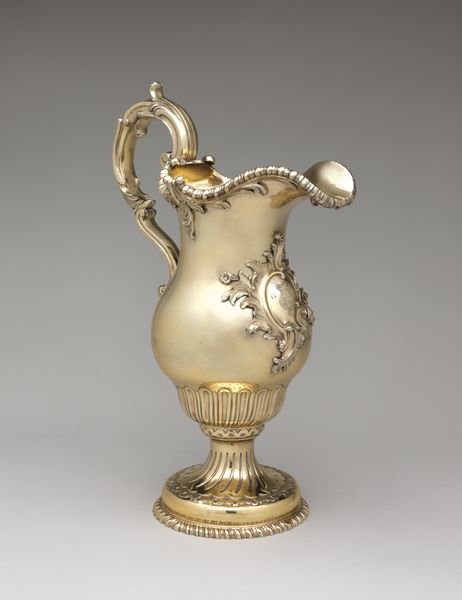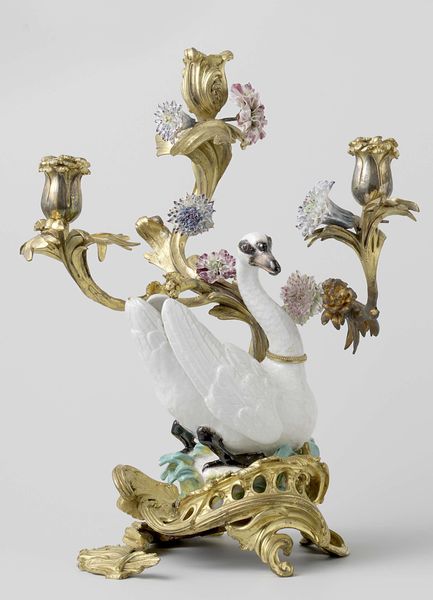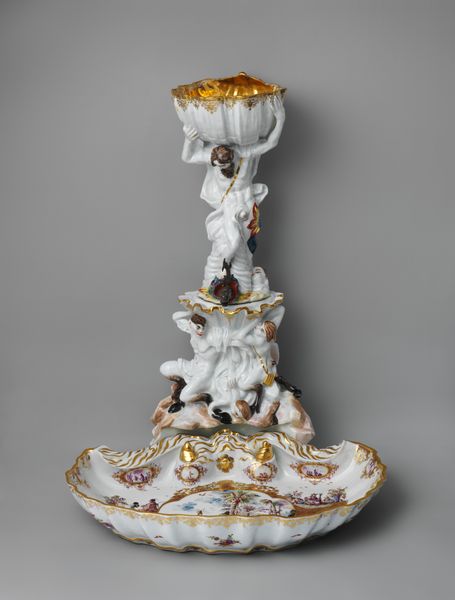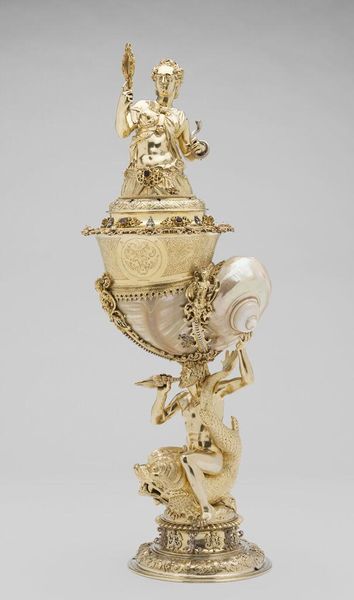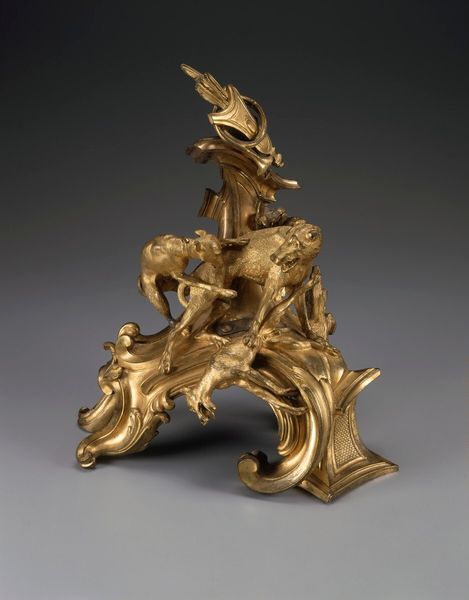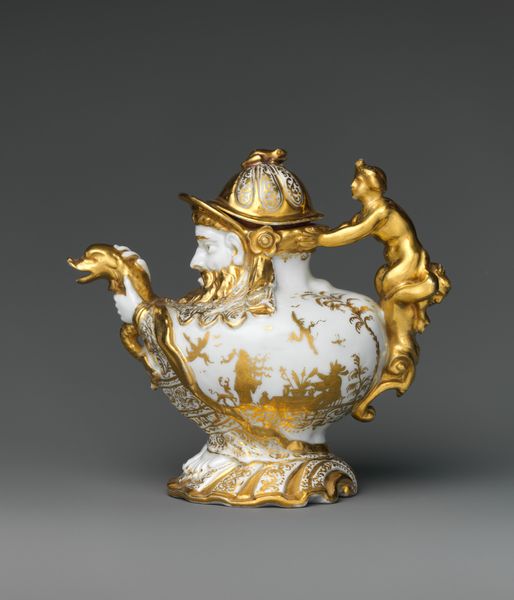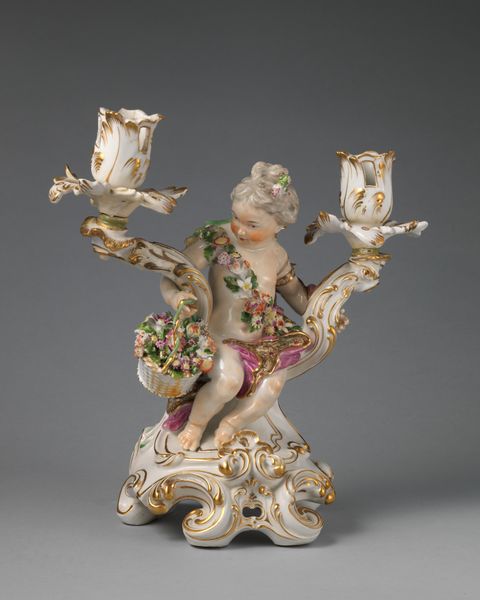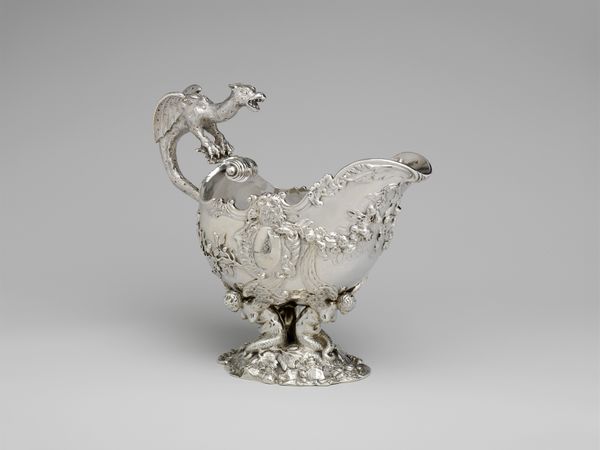
ceramic, porcelain, sculpture
#
baroque
#
sculpture
#
ceramic
#
porcelain
#
figuration
#
sculpture
#
decorative-art
#
rococo
Dimensions: 23 × 16 1/2 × 10 1/4 in. (58.4 × 41.9 × 26 cm)
Copyright: Public Domain
This Swan candelabrum was crafted by the Meissen Manufactory, a German porcelain company, sometime in the 18th century. The swan, with its gleaming white porcelain body, is more than just a decorative element; it’s a symbol deeply embedded in the social fabric of its time. Swans were often associated with purity, grace, and aristocratic elegance. During the 1700s, porcelain was often seen as 'white gold', a precious material that demonstrated the owner's wealth and status. Imagine the flicker of candlelight dancing on the swan’s surface, illuminating the faces of those gathered around it. The candelabrum becomes a silent witness to intimate conversations, to power dynamics, and to the subtle negotiations of social life. In its existence, the candelabrum maintains traditional representations of wealth. However, it also provides alternative narratives because it brings the natural world into the aristocratic home. It serves as a reminder of the delicate balance between nature, artifice, and social identity.
Comments
No comments
Be the first to comment and join the conversation on the ultimate creative platform.
